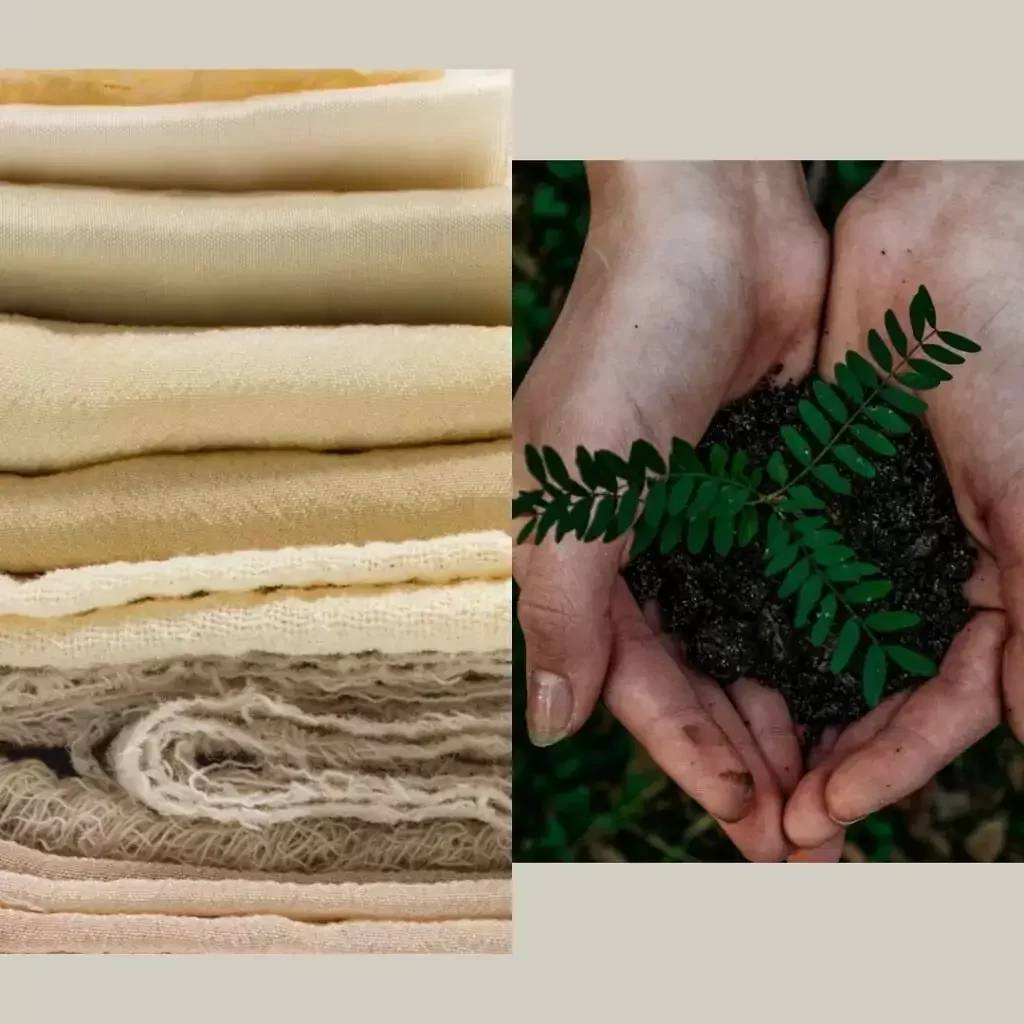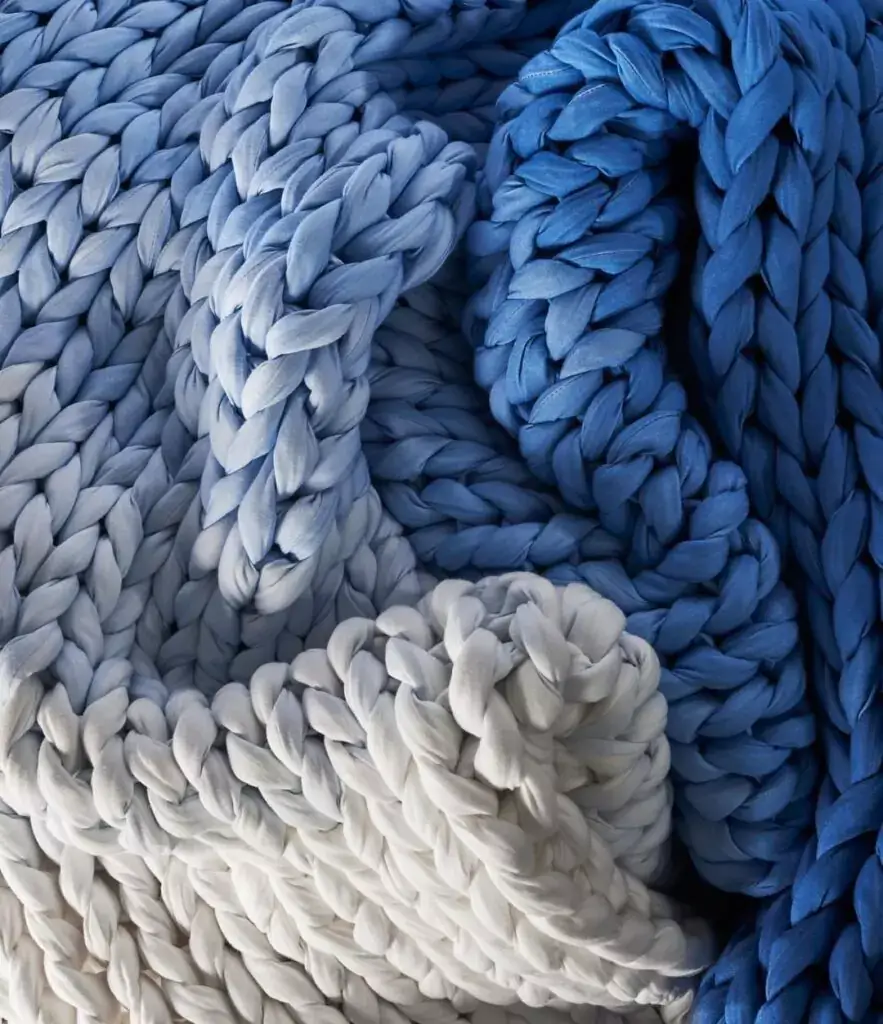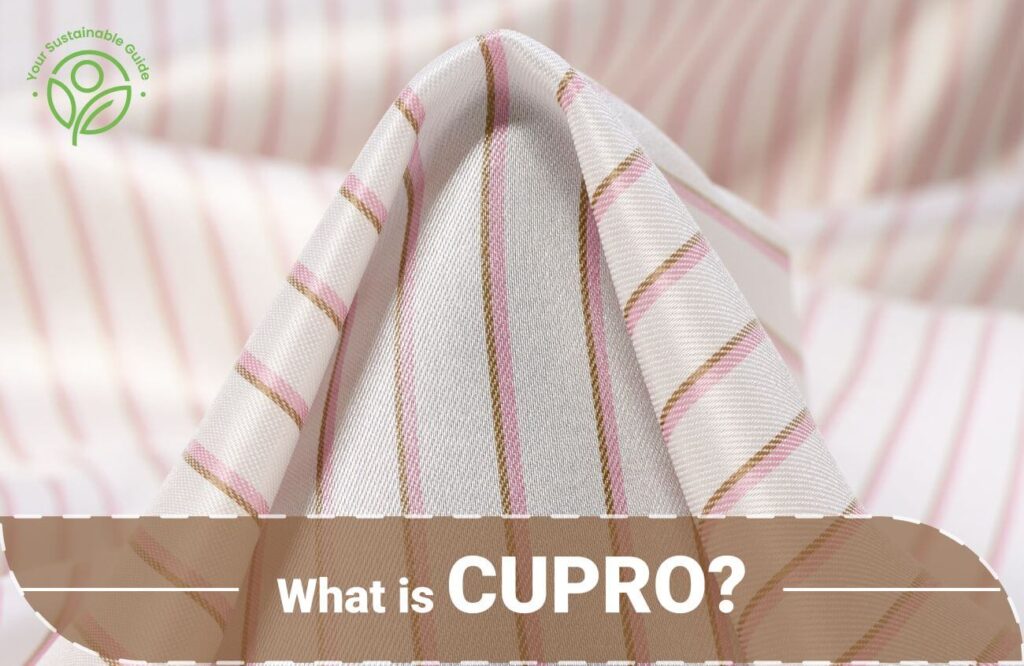In our quest to build a guilt-free sustainable wardrobe, what is it that we check in a garment’s label? With sustainability being the coolest trend that everybody wants to jump in, companies are bringing forward lots of innovative fabrics that are advertised as sustainable. But which fabrics are really ‘green’ and which are merely being ‘greenwashed’ in the name of sustainability remains to be the real question.
Now, if you’ve been paying close attention to use of innovative fabrics in some of the labels of your sustainable clothes, you might have come across lyocell fabric or Tencel a lot (Tencel being a brand name for the most sustainable type of lyocell). Considered the new ‘cool’, Lyocellfabricis the hot favorite of a lot of high-street and luxury sustainable brands. Made of wood pulp, this eco-friendly fabric is known to give an extraordinary level of comfort while also being kind to the planet. Want to know more? Let’s dig in!

- What is Lyocell Fabric?
- Is Lyocell Fabric Sustainable?
- Is Lyocell Fabric Affordable?
- Lyocell Fabric Certifications
- Properties of Lyocell Fabric
- Pros & Cons of Lyocell Fabric
- Uses of Lyocell Fabric
- How to Care for Lyocell Fabric
- Famous Brands That Use Lyocell Fabric
- Best Alternatives to Lyocell Fabric
- Conclusion
What is Lyocell Fabric?
Lyocell fabric is a semi-synthetic fiber which is an updated form of rayon. This fabric is composed primarily of regenerated cellulose fiber derived from eucalyptus wood. But hardwoods like birch or oak are used as well. Later on, the organic cellulose obtained is processed with low-impact synthetic substances resulting in lyocell. Similar to the luxurious touch and feel of silk or cotton, lyocell is widely used as their ‘greener’ substitute.

Lyocell was originally developed in 1972 by the company named American Enka. However, at American Enka, lyocell fabric only made it through the initial development phase before the project was abandoned. Its commercial production was started later in the 1980s by Courtaulds Fibers, a British company. This company picked up the previous research done on lyocell and transformed it into a similar fabric Tencel.
Tencel and lyocell fabrics are the same, Tencel is just the patented name of lyocell and the two terms can be used interchangeably or combined as well. Later on, Courtaulds Fibers was acquired by an Austrian company Lenzing AG, a giant international textile corporation that happens to be the leading manufacturer of Tencel lyocell to date. The company has factories all over Europe and some in China. At present, a major chunk of Tencel lyocell is produced in China.
What is Lyocell Fabric Made of and How it is Made?
Lyocell fabric is made of cellulose extracted from wood chips of trees like eucalyptus, oak, or birch, and sometimes even bamboo. The production process of Tencel lyocell involves a closed-loop system that begins with the trees harvested sustainably on managed tree farms or forests.
Once the trees have matured and are ready to be used they are broken down into tiny chips and loaded into tanks of chemicals to soften the chips and turn them pulpy. This pulp is then bathed in water and sanitized using bleach. Next, it is dried to form sheets, which are then rolled into spools. These rolls of cellulose sheets can weigh up to a hefty 500 pounds.

The sheets are again broken into 1-inch-sized squares and heated in a non-toxic N-Methylmorpholine-N-oxide (NMMO) which is an amine oxide known to be an excellent solvent for cellulose fibers like lyocell. On dissolving, this cellulose transforms into a clear liquid, which after filtration is pumped through spinnerets to achieve long thin fibers. The fibers are again soaked in diluted amine oxide to set, followed by getting washed with demineralized water and dried.
At this stage, the fibers are known to be in a state called tow. These bundles of tow are then placed in a crimping machine that compresses the fiber, followed by being carded (brushed), in order to separate and organize the strands. Lastly, the fibers are cut to an appropriate size, and then they are ready to be used in making a variety of different products.
Is Lyocell Fabric Sustainable?
Yes, Tencel lyocell fabric is considered as one of the most sustainable fabrics the textile world has ever developed. Lyocell is made of wood pulp from fast-growing trees like eucalyptus, bamboo, oak, and beech. The water consumption or pesticide requirements for growing these trees are minimal, and they can easily be grown on less fertile lands that are otherwise unsuitable for growing other crops.

Considered as the most eco-friendly fabric, Lyocell’s production process is done via low energy, low water consumption, closed-loop system with a non-toxic chemical, 99.5% of which is recycled further for use, with the remaining 0.5% discharged as non-hazardous effluent. Furthermore, the fabric is highly durable, thus making lyocell products to be long-lasting. And when your product has reached its end of life, you have nothing to worry about as it is 100% biodegradable.
A top-notch clothing brand Selfridges & Co., has even announced lyocell to be a ‘miracle fabric’ for its ability to replace fabrics that are less sustainable and harsh to the environment.
Is Lyocell Fabric Affordable?
Lyocell fabric was made as an alternative to silk and cotton. It is affordable if compared to organic high-quality silk clothing but always more expensive than conventional cotton clothing despite being semi-synthetic in nature. The reason, while silk production is natural, it is not a very sustainable option. Plus, it is quite difficult to produce pure silk in large quantities, resulting in a limitation of its circulation in the markets and high prices.
However, conventional cotton has been significantly cheaper to produce in the last couple of decades, making it easily available and affordable compared to Tencel lyocell. Again, products made from lyocell blended with other fabrics like cotton or recycled polyester are quite affordable.
Lyocell Fabric Certifications
For a mark of sustainably made lyocell’s authenticity, you can check for the following certifications.
- Program for the Endorsement of Forest Certification (PEFC)
- United States Department of Agriculture (USDA)
- EU Ecolabel
- STANDARD 100 by OEKO-TEX®
Properties of Lyocell Fabric
- Tencel lyocell fabric is 100% biodegradable.
- It is extremely breathable and lightweight.
- Lyocell has a silky smooth texture that has a soft and gentle touch.
- Lyocell fabric drapes well and has a certain sheen making it as luxurious as silk.
- It is antibacterial because of its moisture retention qualities and doesn’t hold odor.
- Tencel lyocell is wrinkle-resistant and has good elasticity.
- It is hypoallergenic.
- Tencel lyocell is a versatile fabric and can be used in multiple ways. From garments and home textiles to commercial uses and medical applications, it can be used in making literally anything.
Pros & Cons of Lyocell Fabric
Pros of Lyocell Fabric:
- Lyocell fabric is made from trees that do not require extra care or water and can thrive even in harsh lands, making the production requirements negligible. Hence, no strains are caused to the environment while producing the fabric’s raw material.
- It is fully biodegradable and compostable.
- Lyocell is breathable, has impressive tensile strength, and is gentle on the skin with a soft, silky texture of any luxurious fabric.
- It is non-allergic, hence, can be easily used by people who have sensitive skin.
- Lyocell can easily blend with other fabrics like cotton, recycled polyester, acrylic, wool, and silk.
- Lyocell is an eco-friendly fabric that is readily available.
- Lyocell is stretchy and has moisture-wicking properties, making it an excellent option for activewear.
- Unlike other synthetic fabrics like viscose rayon, polyester, etc., lyocell is made using a “closed loop” process, meaning the chemicals used in its production do not get released into the environment.
Cons of Lyocell Fabric:
- Tencel lyocell is compostable, but when blended with other synthetic fibers, the new fabric version no longer remains biodegradable.
- Lyocell is a soft fabric and 100% lyocell garments are delicate so it is recommended to be cold-washed and air-dried.
- Due to the high-end technology used in producing lyocell, products made from this fabric are more expensive.
- Lyocell has reasonably low surface energy, making it challenging for dyes to absorb into this fabric.
- Because of its rising popularity, a lot of textile manufacturers have started to produce lyocell, ultimately consuming a lot of energy and resources in its making.
Uses of Lyocell Fabric

- Tencel Lyocell is used as an alternative to cotton or silk. Dresses, shirts, trousers, scarves, intimate wear, activewear, etc along with bathing and home textiles like towels, bathrobes, bedsheets, duvets, cushion covers, throws and much more can be easily made with lyocell fabric.
- This fabric is also used in a variety of commercial settings. For example, manufacturers nowadays have started to use lyocell instead of cotton in the fabric parts of conveyor belts, as belts made with lyocell last longer and are more resistant to wear and tear.
- For its tensile strength and high absorbency profile, lyocell is also used in medical dressings.
- Lyocell is also considered as an ideal filtration material, hence it is used as a component for specialty papers.
How to Care for Lyocell Fabric
- Always use a gentle laundry detergent or an eco-friendly wool-wash detergent for cleaning your lyocell clothing.
- Always hand-wash or machine-wash to avoid damage at a low temperature (max. 30°C).
- In the case of machine washing, always select a delicate cycle like the wool-wash cycle.
- Eco-friendly wool wash detergent.
- Air-dry your Tencel lyocell pieces.
- Avoid ironing your lyocell clothing if possible as it is wrinkle-resistant, but in case you must then gently steam or iron in a warm setting. Silk mode works best.
Famous Brands That Use Lyocell Fabric
- All Birds
- J. Crew
- Tentree
- New Balance
- Athleta
- Organic Basics
- Mother of Pearl
- Tamga Designs
- Patagonia
- Levi’s
Best Alternatives to Lyocell Fabric
Modal – Modal and lyocell are siblings that belong to the same rayon family. Made with cellulose from beech and oak trees, Modal is a sustainable semi-synthetic fabric that holds properties similar to lyocell and is used in making activewear, intimate wear, dresses, tops, trousers, and whatnot. This plant-based fabric works as a good alternative to lyocell in case you’re looking for a more affordable sustainable option.
Cupro – Also known by the names Bemberg, Ammonia Silk, and Cuprammonium Rayon, Cupro is another sustainable semi-synthetic fabric that is made by processing cotton linter (fuzz around cotton). This fabric is comparatively cheaper than lyocell. Just like lyocell, cupro works as a great alternative to virgin silk because of its shiny, silky, and buttery texture.
Cotton – Cotton is a completely natural fibre that is lightweight, breathable and hypoallergenic. Organic cotton is a certified type of cotton that is grown in tropical regions without pesticides and has less water consumption. Cotton is generally grown in countries with a sub-tropical climate, like India, Egypt, Turkey, China, etc. Organic cotton can be an easy substitute for lyocell as it has the same level of breathability and softness as lyocell. Plus, it is hypoallergenic, lightweight, and gives luxurious comfort just like lyocell.
Conclusion
All in all, we love Tencel lyocell! It is not only durable and comfy but also one of the most sustainable fabrics ever created. However, the label does not always tell the whole story when it comes to eco-friendly fabrics these days, and it is important to be on the lookout for greenwashing practices because the sustainable bandwagon is quickly jumped on by some companies to gain extra sales.
As we’ve already mentioned Lenzing AG produces the most sustainable Tencel lyocell and many trusted brands only use Lenzing AG lyocell in their products, or place a strong emphasis on transparency in sustainable sourcing. So make sure to check the fine print of the clothing’s label the next time you go lyocell shopping.







